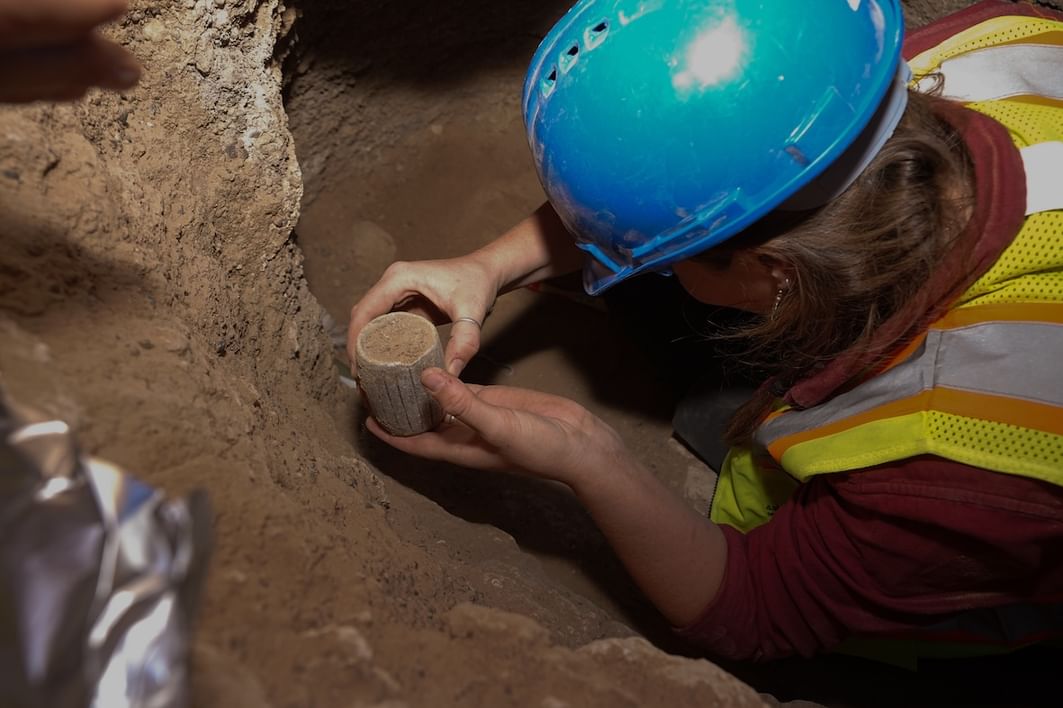The Department of Culture and Tourism – Abu Dhabi (DCT Abu Dhabi) has announced the groundbreaking discovery of the first major Iron Age cemetery in the United Arab Emirates.
Unearthed in the Al Ain Region by the Archaeology Section of DCT Abu Dhabi’s Historic Environment Department, the 3,000-year-old necropolis is set to reshape understanding of the region’s ancient past.
The newly uncovered site, believed to contain more than one hundred tombs filled with grave goods, represents a previously unknown chapter in the UAE’s Iron Age history.
“This discovery promises to transform our understanding of the ancient Emirates,” said Jaber Saleh Al Merri, Director of the Historic Environment Department at DCT Abu Dhabi, according to WAM.
“For years, the Iron Age burial traditions remained a mystery, but now we have tangible evidence that brings us closer to the people who lived here 3,000 years ago. It reinforces our efforts to preserve, promote, and protect Abu Dhabi’s heritage for future generations.”
The discovery supports DCT Abu Dhabi’s broader mission to deepen understanding of the Arabian Peninsula’s ancient communities. As the most well-preserved and thoroughly documented chambered tomb necropolis from the Iron Age ever found in the UAE, the site offers a unique glimpse into the social, cultural, and economic life of the time.
All tombs uncovered so far had been looted in antiquity, leaving behind fragile human remains. A forensic team, including an osteoarchaeologist, was on-site to ensure the remains were handled with dignity and care. Laboratory testing will help determine age, gender, and health status of the deceased, and ancient DNA analysis could offer insights into familial links and historical migration patterns.
Constructed by digging a two-meter-deep shaft and hollowing out a sideways oval burial chamber, the tombs were sealed with mudbricks or stones before the shaft was backfilled. The absence of surface grave markers had previously obscured the existence of Iron Age cemeteries in the region.
Despite ancient looting, archaeologists discovered numerous grave goods that reflect high craftsmanship. These include gold jewelry, decorated pottery, carved soft-stone items, and metalwork.
Burial sets contained spouted vessels, bowls, and small cups, alongside copper-alloy weaponry such as spearheads and arrowhead caches—some with preserved wooden shafts and traces of quivers. Personal items like shell cosmetic containers, bead necklaces, bracelets, rings, and razors were also recovered.
The Iron Age was instrumental in shaping the oasis landscape of Al Ain. Around 3,000 years ago, the invention of the falaj—an underground aqueduct system—enabled agricultural growth that transformed the region. While Iron Age villages, forts, temples, and ancient palm gardens have long been identified in Al Ain, the burial practices of the period had remained elusive.
“We know how people in the Bronze Age and Late Pre-Islamic period buried their dead, but the Iron Age has always been a missing part of the puzzle,” said Tatiana Valente, Field Archaeologist at DCT Abu Dhabi. “We are now in a position to understand the evolution of burial customs over time and learn what these changes might say about the beliefs and traditions of the people who lived here.”
The cemetery was discovered as part of the Funerary Landscapes of Al Ain Project, launched in 2024 to investigate prehistoric tombs found during construction monitoring. The project aligns with DCT Abu Dhabi’s commitment to research and preserve the UNESCO World Heritage Site of Al Ain.
Inscribed as a UNESCO World Heritage Site in 2011, the Cultural Sites of Al Ain are recognized for their outstanding universal value. This latest find adds crucial context to the development of prehistoric societies in the region, especially about water management and life in desert and mountain environments.






